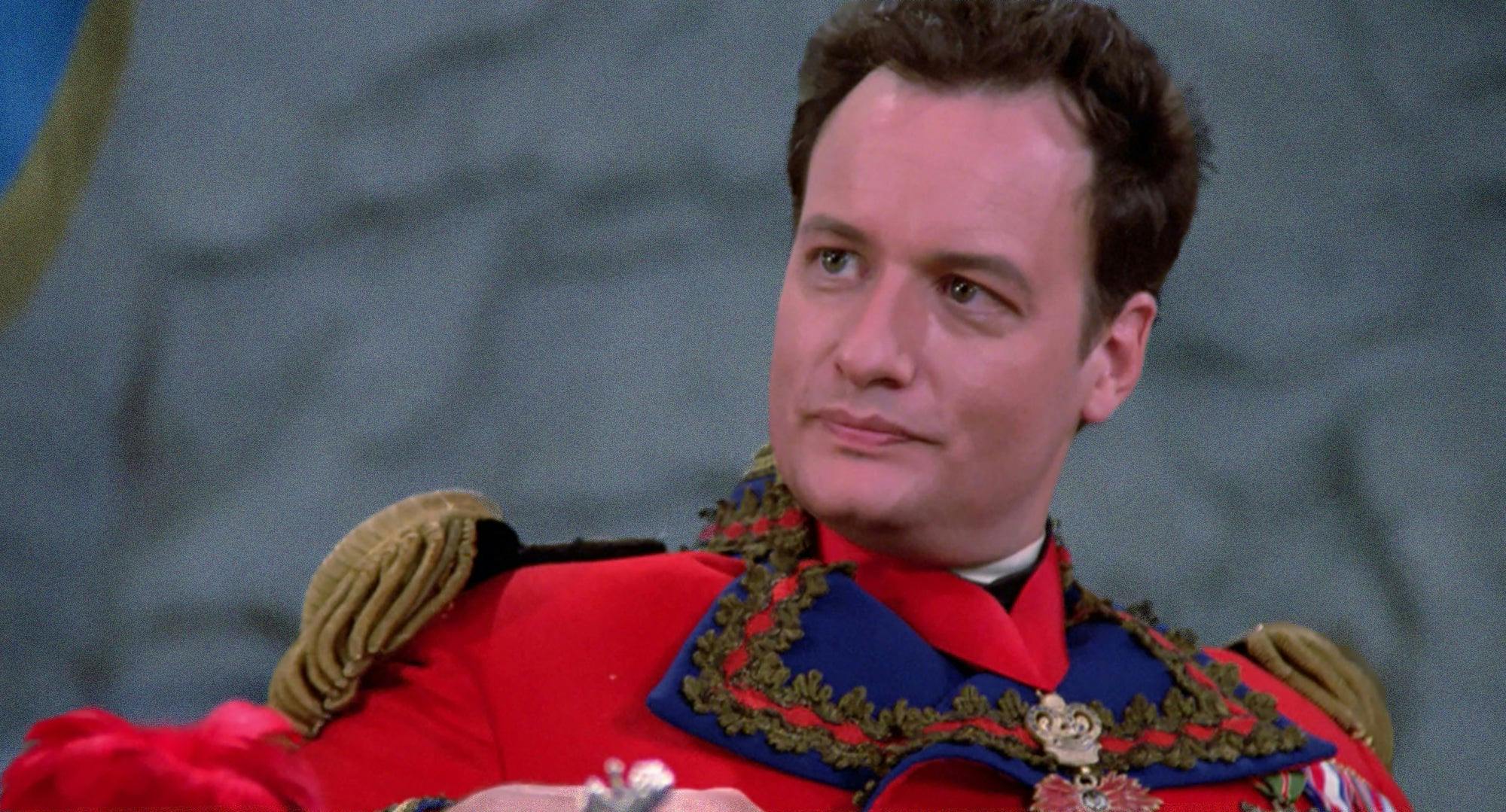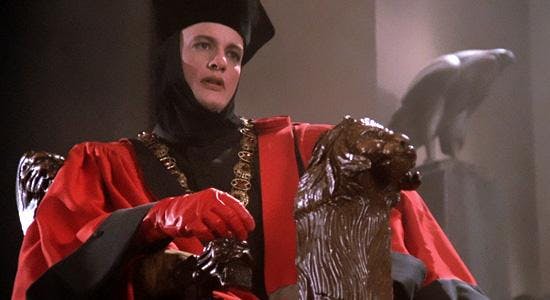Published Nov 23, 2019
One Trek Mind: Q the Trickster
32 years ago today, "Hide and Q" premiered, making it the perfect time to look back at our favorite omnipotent being.

StarTrek.com
If you looked only at the first and final episodes of Star Trek: The Next Generation you might think of Q primarily as a pan-dimensional judge. After all, he sits in a chair, looks down at a microcosm of all humanity in the form of Captain Picard (we should be so lucky!) and judges him. But if you take the long view of Q (over twelve Star Trek appearances in all) he's something else. He's the Trickster.

Almost all cultures have a Trickster in their folklore. Some are nefarious (think of Loki from Norse Mythology or, more recently, the Marvel Cinematic Universe) but others, while not exactly good, aren't exactly bad, either. The Trickster takes the form of the Coyote in many Native American traditions, and sometimes he's there as an arbiter of justice, other times he's nothing more than a pest. There are also the tales of Br'er Rabbit, which have their roots in African-American storytelling but have commonalities with animal Trickster stories from across the African continent. (If you want to draw a line from the Anansi spider stories of West Africa through Br'er Rabbit in the American South to carrot-chomping Bugs Bunny at Six Flags Amusement Parks, you wouldn't be the first.)
So this leads us to Q. If you consider that the Trickster myths were created by Indigenous peoples throughout world history to try and make sense of a confusing landscape, then the tradition makes perfect sense with the origin of TNG. Our beloved Star Trek writers, faced with the enormity of the universe, would need a mischievous proxy to goad, torment, and enlighten a future Humanity as we made our way through this new world. Q, Captain Picard's eternal foil, isn't a villain, he's a pain in the you-know-what. But maybe he actually has humanity's best interest somewhere where he ought to have a heart?

If it weren't for Q's poking around in the Enterprise's business, the Federation would never know about the Borg. Now, this knowledge went both ways. Once the Federation knew about the Borg, the Borg knew about the Federation, and soon zoomed their way to being the assimilation process. But this is chicken-and-egg reasoning. The fact remains that Q's heads-up gave the Federation time to get its act together, study the Borg and prepare for attack. Did they lose many in the ensuing battle? Absolutely. But how much worse would it have been if it were a true sneak attack, even if it was decades or even a century later?

The Tricksters of lore tend to change shape, and ours does, too. Most of the time Q appears as John de Lancie (and why not? He's a handsome and eloquent man!), but with the snap of a finger he can be John de Lancie in any sort of guise he chooses. The best, of course, was as the member of a Mariachi band. Another commonality with folklore is the Trickster's occasional loss of all his powers. So many of these simple tales center on reversals-of-fortune. Who can forget the time that Q became human and faced the indignity of falling asleep. (“How can you stand it day after day?” he questions Picard. “You get used to it,” Picard answers.)

Jordan Hoffman is a writer, critic, lapsed filmmaker and the host of Engage: The Official Star Trek Podcast. His work can also be seen on Film.com, ScreenCrush and Badass Digest. On his blog he has reviewed all 727 Trek episodes and films, most of the comics and some of the novels.

